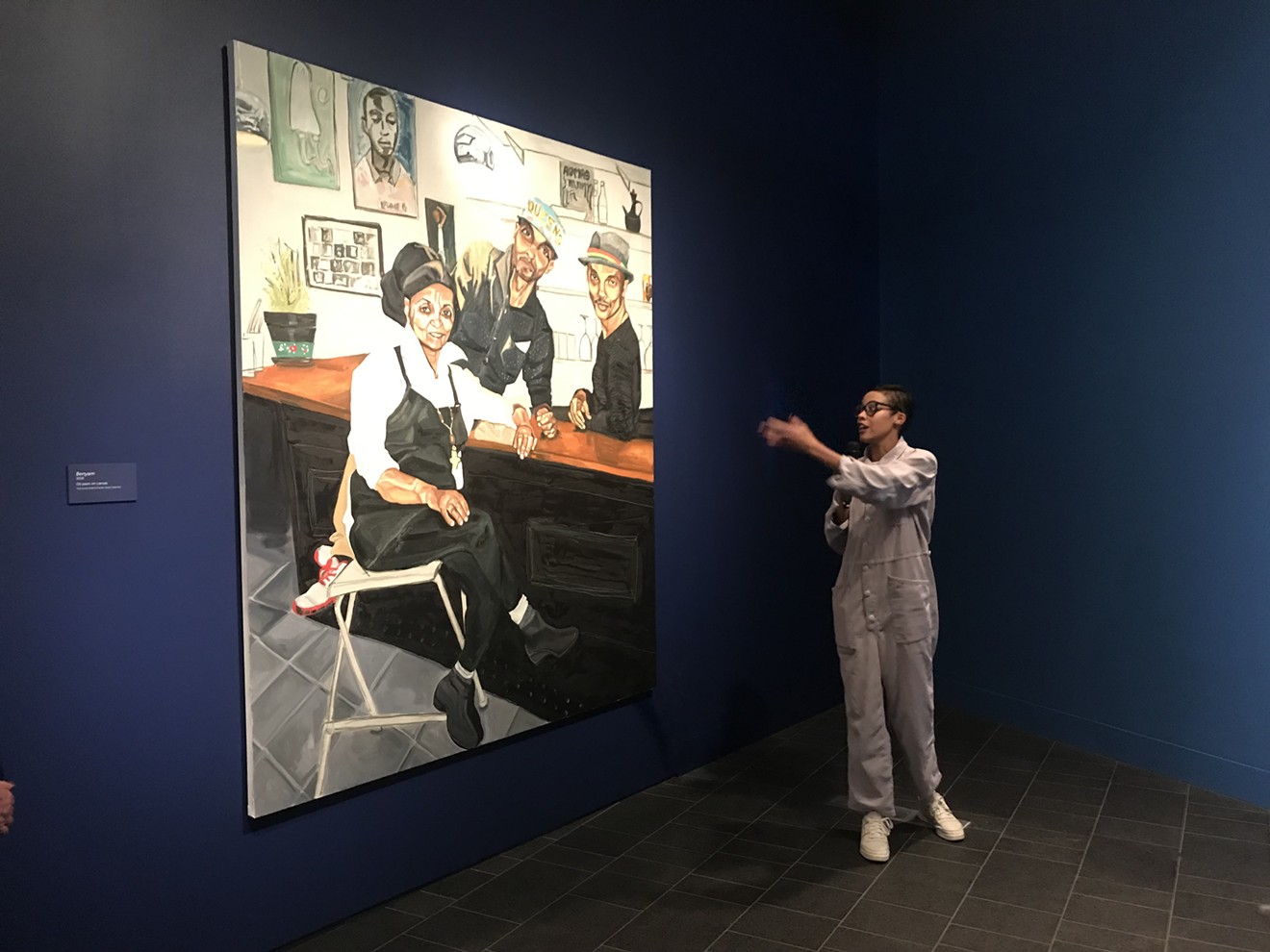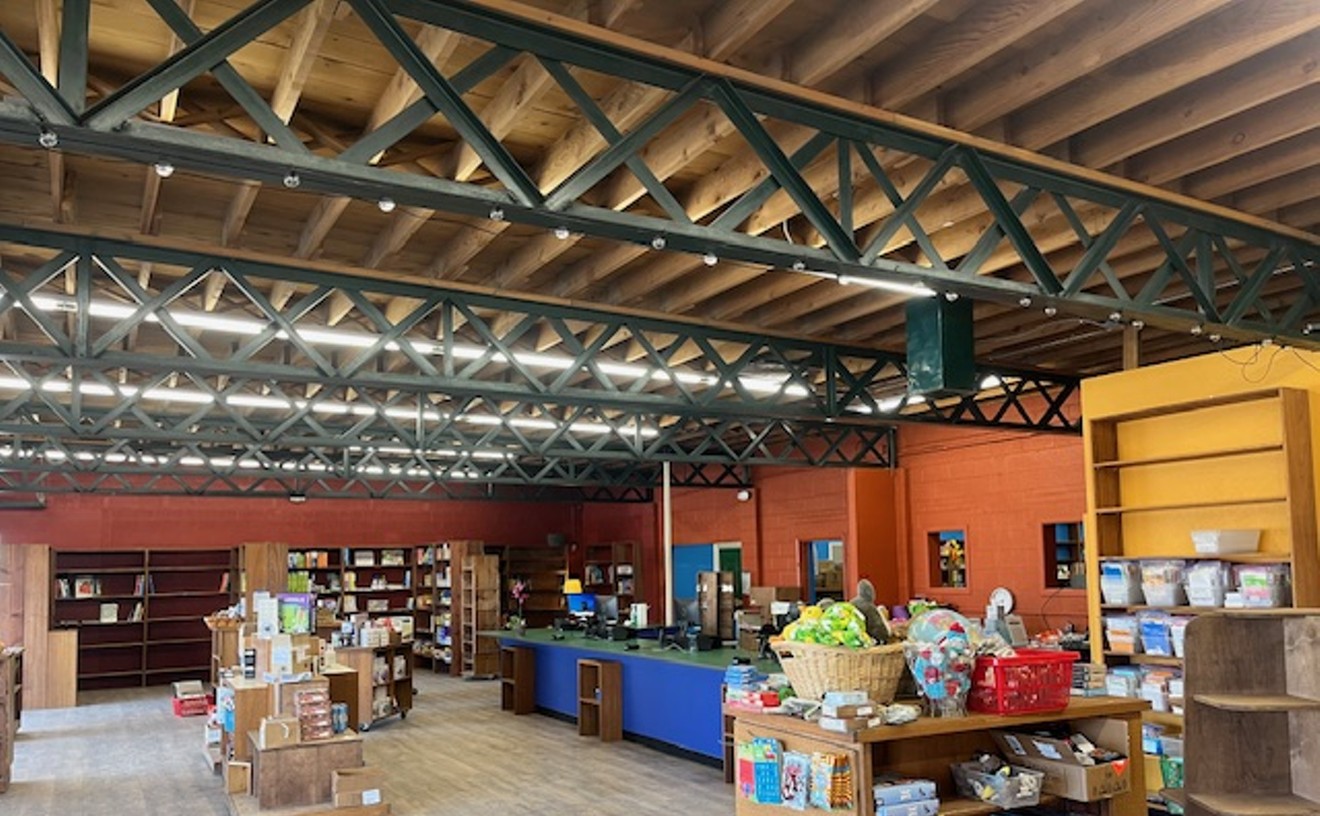“The fact that I grew up in Denver unequivocally played a role in my development as artist and how I'm shaped as a person, through my interests and my influences as a young girl,” says Casteel. “My sensibilities as an observer began here, and there’s literal evidence of Denver in several works in the exhibit showing friends and family of mine.”

“Marcus and Jace,” oil paint on canvas.“Putting aside Jordan’s skills as an oil painter, I think her gift is to capture these moments and send a messge to the world that even the common Joe at the barbershop, the common barber, the common individual in the community, on the bus stop, is worthy of being celebrated.” — Denver barber Marcus Pope, 2018
Jordan Casteel, courtesy of Adam Green Art Advisory on behalf of a private collection
“It’s something deep within me. I’m not sure a genesis actually happened as much as it just was a part of me. In my first oil paintings while I was abroad, studying in Italy, I did some self-portrait studies,” she notes. “I also painted my colleagues and classmates. I loved Italy.”
It was the place, Casteel adds, where she refined her painting style with new confidence. “There were people in my life and in the world that others didn't know as intimately as I had. I wanted them to know about people I love and care about, and was explicitly thinking about how to share that with others. And the paintings allowed me to use my sheer love of painting as a way to represent that.”
But Casteel shrugs off the idea that there was ever an aha! moment when it all came together for her as an artist. “It’s something deep within me,” she notes.

Jordan Casteel, Charles, 2016. Oil on canvas. Casteel says Charles, micro-entrepreneur who sells furs, represents the energy of street. “He’s curated a space to highlight what he does. In Harlem, the interior is exterior.”
Collection of Jordan Casteel. Image courtesy of The Studio Museum in Harlem, New York ©Jordan Casteel.
“I’m in constant conversation with my subjects. They are all looking out and back at me — that’s one of the main things I’ve always asked of people," she says. "You feel it is a palpable force.”

Jordan Casteel, “Sylvia’s (Taniedra, Kendra, Bedelia, Crizette, De’Sean), 2018.”
©Jordan Casteel, Denver Art Museum collection
“The female or the essence of woman has never been absent from this work, and in reality, this exhibition will show that: One of the first paintings you see is an early painting of my mom, and there are other women sprinkled through my practice," she says. "As you move through the newer work, women are also represented. In my work, I recognize my relationship to those I love, and some are men. My own family is saturated with men, and I have a lot of male friends, too.”

Denver-born, New York City-based Jordan Casteel comes home for her first major museum exhibit.
Courtesy of the artist and Casey Kaplan, New York © Jordan Casteel
“It ends with more recent works representing my subway series,” Casteel continues. “Since my time in grad school, I like to make these cropped paintings of people’s hands: my mom’s hands, hands in a barbershop, New York people’s hands on the subway.” It’s a different, smaller view of humanity, that furthers the show’s aim to acknowledge the ordinary details of being human. “I hope some museum-goers and viewers are one of two types: people who are engaging with the museum and art maybe for the first time, seeing themselves reflected; and collector types, who might see something they maybe haven’t seen before but feel connected to, regardless.”

"Miles and Jojo," by Jordan Casteel, oil on canvas, 2015. Collection of Bernard I. Lumpkin and Carmine D. Boccuzzi.
Image courtesy of Sargent's Daughters, New York. ©Jordan Casteel
And Casteel thinks there are other revelations to be had by viewers walking through Returning the Gaze. She’s still on a high, seeing it come together in her home town: “Man, I am truly in disbelief! I had an opportunity to walk through the exhibit with my parents, and I have to admit that tears were shed. I've been compartmentalizing in the gallery, trying to process who I was as child and how I’ve now really blossomed into someone none of us could have imagined. It’s like a dream, but a dream with tangibility.
“How do you get work on the walls of a museum? The idea is so abstract, and now it’s happening!”
Jordan Casteel: Returning the Gaze opens at the Denver Art Museum, 100 West 14th Avenue Parkway, on a convenient date — February 2, the DAM’s Free First Saturday — and runs through August 18. The exhibit is included in the regular DAM museum admission fee of $8 to $13, or free for members and youth ages eighteen and under. Learn more at the Denver Art Museum website.












